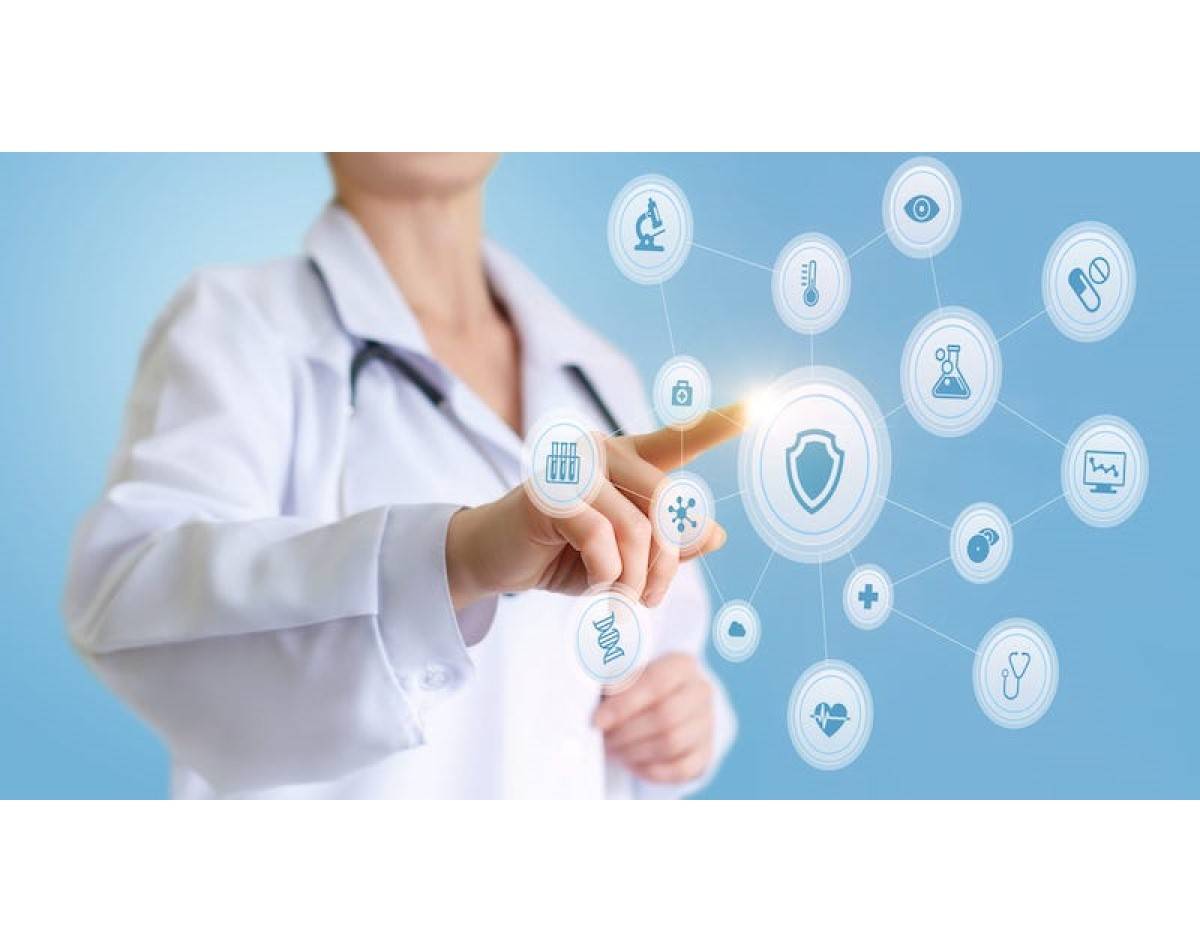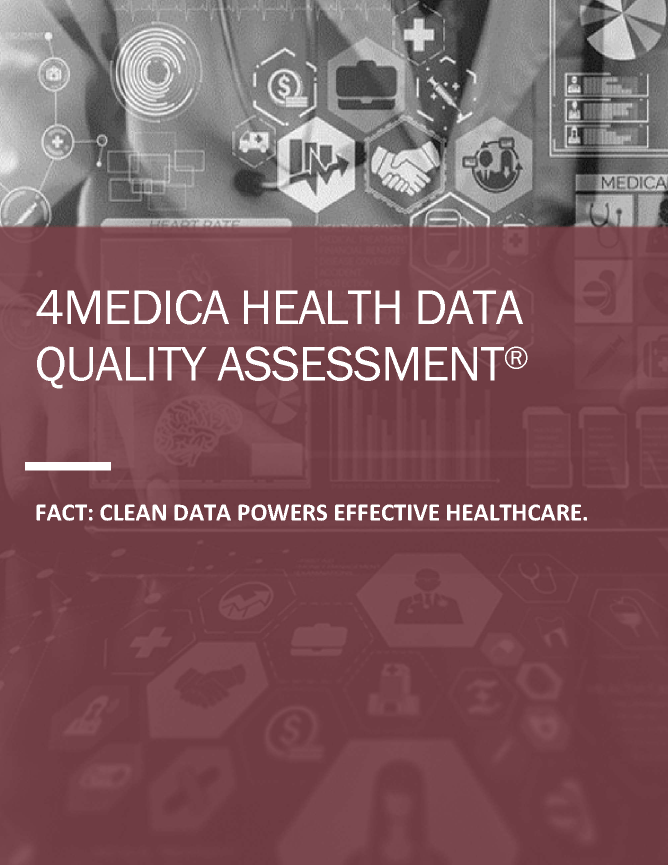This article was written by Chris Wolski and published by CLP Magazine. Click here to see original article.
There needs to be a revolution in the way clinical labs handle their data. 4medica President Gregg Church provides practical reasons why proper management of patient data needs to be a high priority for clinical laboratories.
Perhaps one of the most significant consequences of the late twentieth century digital revolution was the explosion of data—big or small—which is the lifeblood of most modern American business, including healthcare enterprises.
However, having reams of data and managing properly is not a fait accompli. There are endless reports of mismanaged data across the healthcare enterprise, including clinical labs. Managing clinical lab data may be one of the most pressing challenges facing modern laboratories.
That’s the view of Gregg Church, president of 4medica, where he has led the company in transforming laboratory services through a cloud-based integration of EHR and clinical laboratory data.
Church recently sat down with CLP to discuss what’s driving the focus on better management of clinical laboratory data, the role of data and testing accessibility, the downside of not properly managing clinical data, and what labs can expect data management to look like in the next five years.
Church’s answers have been edited for length and clarity.
CLP: It’s your position that data is becoming as important for labs as any other part of the healthcare enterprise. Why now? And what’s driving this?
Gregg Church: Digital transformation is what’s driving it. As the industry moves toward data exchange and near-time, real-time interoperability, labs have been doing what they do best, which is to run and perform tests in their diagnostic centers. COVID-19 forced labs to repurpose very quickly to handle higher volumes of testing. Today there’s more technology and more adoption of automation. But if a lab is still manually handling paper requisitions and getting paper requisitions with specimens, that means there are humans involved who must do something with that paper. This creates problems because humans aren’t perfect; we can all make errors. What happens is you end up creating bad information. Bad demographics get entered that can be mis-keyed information. There can be a lot of reasons these things happen. Labs can process tests, which they’re good at, get them into the machines and get the results back, but if they don’t do a good job of entering the information on the front end, it creates a risk to the patient.
And, from a financial perspective, you start seeing challenges around insurance and billing if the demographics aren’t matching with the correct insurance information. Payers are smart with their algorithms and software systems; they catch those problems and deny those claims quickly. Then the lab must go back and try to figure out what happened. Was it something we did, or did we get bad information from a practice or facility that uses our lab?
So that’s the first problem. What’s the opportunity if you improve it? Well, if you improve your operations, you get better workflow and improve the business bottom line. In addition, now you’re becoming better positioned to be part of the digital revolution because a lot of things are moving toward precision health or what some people call precision medicine. More artificial intelligence (AI) is being applied, especially in pathology where digital solutions eventually are going to replace the pathologist because they can read the slides faster and be more precise. Again, though, if the data you provide as a laboratory and the data that comes in isn’t accurate and well matched to the patient identity and the ordering physician’s diagnosis and test information, then the data isn’t reliable and can’t be used to improve healthcare.
The lab industry is beginning to recognize the need for better data quality. Labs play a significant role in healthcare, but many labs still are operating at status quo, and it becomes a missed opportunity if they don’t jump on the data revolution train and start moving toward better data quality.
CLP: How has the pandemic brought data—and particularly data integrity—to the forefront?
Church: Picture this: you’re a clinical lab doing your normal testing and all of a sudden this thing called COVID-19 hits. If you were doing PCR testing, you pivoted quickly because many patients weren’t receiving care from providers. This became an opportunity for labs, many of which repurposed their testing machines. The problem? Now they are getting all this different data coming in from drive-up testing sites, walk-in testing sites, provider practices, and retail pharmacies that are conducting testing. These data sources may have different IT systems and different ways of capturing patient identification information. Some sites literally were scribbling down information because they weren’t prepared for this type of process. None of them were using automation. A lab gets an order and runs a test and when it gets results back, there may be an empty field where a phone number or address should be. As a result, they have no way to communicate the test results back to the patient unless they had good provider information.
The pandemic brought more visibility into how data should be captured and why it’s important at registration and at the point of care to make sure that’s addressed. Data standardization will become much more of a focus in the industry. How we capture data, consistency of what goes into required fields—that’s all important. Then you’ve got to hold your employees who are conducting registration much more accountable to make sure complete information is always entered on every patient.
That’s the good news. The bad news is we’re in catch-up mode and a lot of people are trying to clean up the bad data that was ingested into their systems. Labs will tell you that during the pandemic they created a lot more duplicates than normal because they couldn’t slow down the assembly line, they didn’t have a way to verify and validate. People conducting data entry for labs are instructed not to try to resolve discrepancies; they’re instructed to create another record to keep things moving.
CLP: What have these poor data capturing practices exposed about testing accessibility?
Church: People who were insured and those who could afford testing didn’t have as much of an issue. But for the people who did not have insurance and those for whom there wasn’t an immediate medical need—they didn’t have active COVID symptoms—it became problematic. The federal government helped by making testing available for pretty much every use case and every person. But the consistency and the reliability of testing became an issue early on. It took a long time to get test results back, so people started becoming anxious about the reasons for the delays. But it was just because of sheer volume. I also think poor data quality had some impact because while the volume was creating the slowdown, the low reliability of the data exacerbated that backlog. I think about Los Angeles as a use case, where they converted stadiums into testing centers and cars of people were lined up for tests. Some people didn’t want to wait for their test results, so they went back a couple of days later and got in line again. This resulted in multiple tests being performed on the same person because it was difficult to get test results back quickly.
CLP: As you noted above, labs have really focused on being operationally efficient. But to build on your point—they also need to be data efficient as well. How do clinical labs achieve this? And what does this really mean?
Church: Today, 50% of lab orders, on average, still are received on paper. That’s a huge burden to any lab. As you process these paper orders and as specimens are checked in, it creates a lot of urgency to rapidly perform tests. Doing so requires digital transformation. Labs need to be receiving closer to 90% of their orders electronically, whether it’s through a portal such as 4medica’s, which we’ve been offering for 23 years, or another system. And they need to be connecting to the electronic medical record (EMR) in standalone practices.
Labs would gain greater efficiency through automation. But the long-term benefit of relying on automation and letting systems help you confirm you have complete information—both on the testing side and the insurance information—is it becomes a more efficient way to run a business. The reliability of the data improves because you have less human intervention. This makes it easier to deliver test results faster and accelerate the billing and collections process for services rendered.
CLP: 4medica certainly is working to help labs meet today’s data challenges. Can you outline some of the benefits that your approach is bringing to labs?
Church: Health data quality means different things to different people, but in the 4medica world it starts with always ensuring we have accurately matched all the identities being entered into the laboratory information system. That’s important for a couple of different reasons and we’ve talked about a few of them already, but the identity matching piece is steppingstone No. 1.
Steppingstone No. 2 is, when an order comes in and it’s a repeat patient because that person may be diabetic, for example, and needs routine testing. We don’t want to make a mistake and end up duplicating the patient’s record and conducting duplicative tests. This can create confusion for payers, providers, and care teams because if test results go to the wrong (duplicate) patient record, it will appear as though there are care gaps, which results in it looking as if the patient and provider aren’t following the care plan. And the health plan is even more concerned, because it’s potentially paying out double for that patient. It’s super important to aggregate the whole patient storyline for Medicare to come in and say, “Let’s get your population normalized, let’s make sure we have a good clean data set in your laboratory information system, deduplicated as close to perfection, near 99% accuracy, as we can get it.” Even if we do have out-of-sync demographics from the various disconnected EMRs, if there’s enough of a match on the data that’s coming in, and we can verify that this really is the patient and that we had some transposition error, maybe a date of birth, you can know the order is accurately matched to the patient, and we can collect and bill accurately and promptly. But now we also can build a workflow that says, “Hey, we really do need to go back to that ordering facility or provider and let them know about the transposed numbers in the date of birth.” That’s power for the lab because now the lab has a lot more insight into the data quality issue and can help the contributing practice or facility get the problem corrected.
CLP: There are numerous benefits that data integrity brings to the table. But let’s look at the flipside for a minute—what happens if labs don’t focus on becoming data efficient? What can this do to the continuum of care?
Church: They miss out and here’s why: 70% of diagnoses are based on laboratory data and 70% to 80% of the data that goes into an EMR is lab data. Laboratory data is like gold for healthcare. And there are programs that are trying to improve chronic conditions and provide better treatment, which is where research and life sciences and pharma come in. Labs could benefit from being part of these programs and clinical trials. But no one’s going to want them involved if their data is not reliable. Thus, they miss out on a financial opportunity, and they don’t become part of the continuum of care. This hurts us all because the continuum of care can be much more precise if you have this valuable lab data that not only helps with care for specific patients, but also enables researchers to spot trends among a group of patients. Now you can start predicting population health more accurately. Overall care improves, accountability becomes more realistic, providers and patients are more engaged in their care plans, and health plans are better able to manage risk for the patient and themselves.
CLP: Broadly, what do you think is the future of data management in the clinical lab setting? What can labs expect in the next 5 years or so?
Church: The future of data management is precision medicine. Physicians are relying on much more actionable data to make decisions. AI is a reality as the digital pathology movement grows. Labs won’t go away because 70% of the diagnoses today rely on laboratory testing. I can’t imagine labs being replaced with something else. You still must look at a specimen, look at blood, look at a tissue sample. These things still must be extracted and go somewhere. They still must go through a machine and be reviewed. What will happen is the technologies that do that will become more automated. Labs are going to go through their own transformation, where maybe it’s fewer humans in the labs doing a review. But it’s data management and data quality that will allow this to happen.


